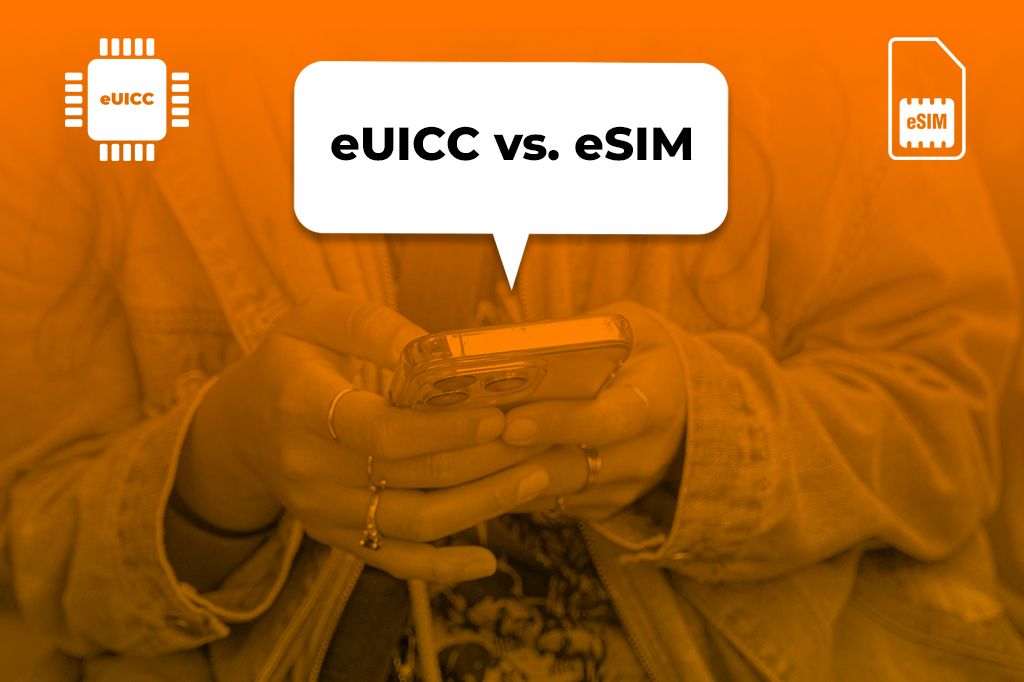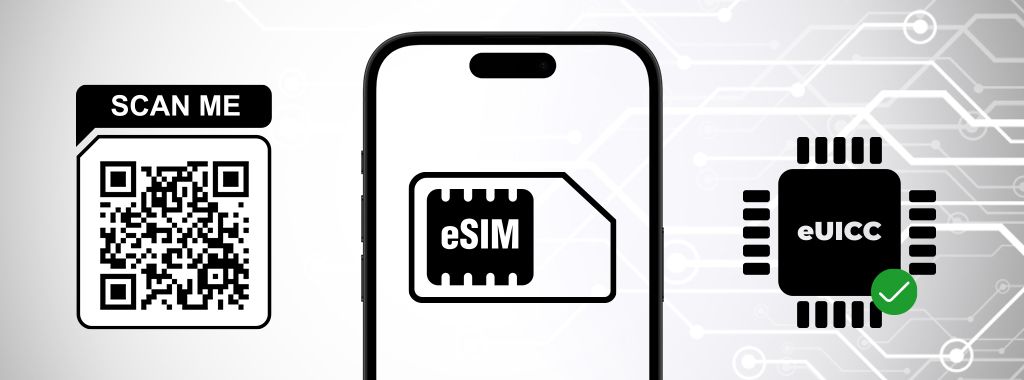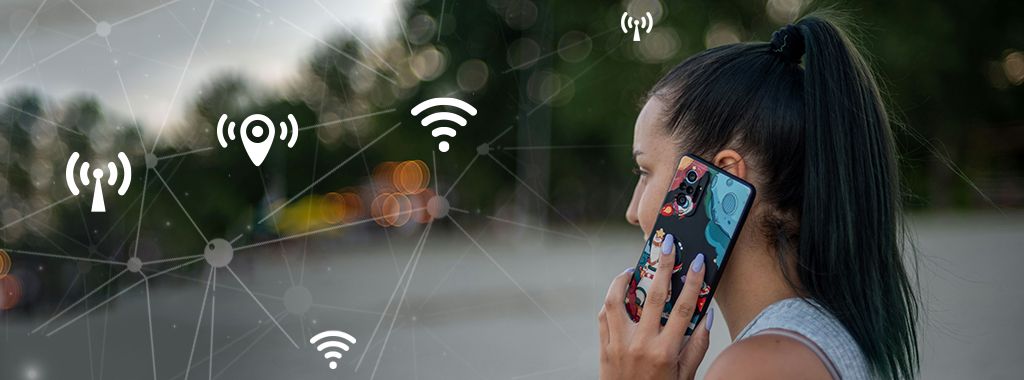eUICC vs. eSIM: The Invisible Tug-of-War Shaping the Future of Connectivity
Luis Rafael•Jun 20, 2025
Have you ever wondered how your new smartphone connects to a network without needing a tiny plastic card? There’s a quiet revolution changing how we connect everything from our phones to our cars and even our refrigerators. This isn’t just a topic for telecom nerds.
Understanding the eUICC vs eSIM distinction is crucial because it’s at the heart of a battle for control, cost savings, and seamless connectivity in our hyper-connected world. Let’s see what these terms mean and why this invisible tug-of-war matters to you.

Picture by Createasea on Unsplash
Quick Definitions, But With Teeth
Many people use “eSIM” and “eUICC” as if they mean the same thing, but they are fundamentally different. Confusing them can lead to costly errors for businesses.
Think of the eSIM as the physical component. It’s a tiny chip soldered directly onto your device’s motherboard. Because it’s physically attached, you can’t remove it like a traditional SIM card. Its main job is to securely store your carrier profile and manage your mobile network connection. The “e” simply stands for “embedded.” If you want to learn more, this article explains what an eSIM is. is for you.
The eUICC is the software that controls how your eSIM works. It lets you download, manage, and switch between mobile network profiles without needing to insert or replace a physical SIM card. This is what enables you to change carriers directly from your device settings. The eUICC supports remote provisioning and can store multiple profiles, making your device more flexible and adaptable.
Saying “eSIM” when you mean “eUICC” is like calling a computer’s hard drive the “operating system.” The eSIM is the hardware, while the eUICC is the software that manages what the eSIM does. This distinction is critical for understanding who controls your connectivity.
How Does This Technology Actually Work?
So, how does your phone magically connect to a new network when you buy an eSIM plan online? It all comes down to a secure, invisible process managed by the eUICC. Let’s break down the provisioning flow:
-
Profile Download: When you scan a QR code or tap a link from your new carrier, you’re telling your device’s eUICC to download a new network profile. Your phone sends a secure request to a server called the SM-DP+ (Subscription Manager - Data Preparation).
-
Secure Channel Setup: The SM-DP+ server verifies your device and establishes a highly secure, encrypted connection to prevent anyone from intercepting your new profile.
-
Activation: Once the profile is safely downloaded and installed on the eSIM chip, the eUICC activates it. Your phone is now officially connected to the new network. The system also includes fallback mechanisms, so if something goes wrong during the switch, your device can revert to a previous profile to ensure you’re never left without a connection.

To truly grasp this, imagine the technology as a layered stack, with each layer building on the one below it. This is how the hardware and software interact inside your device.
-
The Foundation (Physical eSIM Chip): At the very bottom is the hardware itself, a tiny, dedicated processor and memory chip (often in a form factor like MFF2 or WLCSP) soldered directly onto the device’s motherboard. This is the secure physical vault where profiles are stored.
-
The Basic Operating System (The UICC): On top of the chip runs the UICC, the foundational software that has powered SIM cards for decades. It manages the file system, security functions, and the basic logic of a SIM.
-
The Smart Manager (The eUICC): This is the revolutionary software layer that sits on top of the UICC. The eUICC is the “brain” that contains the advanced logic for remote management. It’s what allows profiles to be downloaded, enabled, disabled, or deleted over the air. The eUICC is the component that makes a SIM programmable.
-
The Bridge to Your Device (OS Interaction via LPA): Finally, the eUICC communicates with your device’s main operating system (like iOS or Android) through the Local Profile Assistant (LPA). The LPA provides the user interface you see on your screen (e.g., “Add Cellular Plan”) and acts as the intermediary, passing your commands down to the eUICC.
This brings up an important point in the eUICC vs eSIM discussion, one technology enables a feature called remote switching, which is far more powerful than older solutions like Multi-IMSI, which simply allowed a SIM to hop between pre-loaded networks for better coverage.
eSIM vs. eUICC
The choice between a simple eSIM and a full-featured eUICC depends entirely on the situation. What works for a smartphone is often a poor fit for an agricultural sensor. Here’s a look at how they stack up in different scenarios:
| Use Case | Winner (and Why) | Edge Cases |
|---|---|---|
| Consumer Smartphones | eSIM (with a static profile): Most users stick with one carrier for a long time. A simple, non-rewritable eSIM is often enough for global use, and the full power of eUICC can be overkill. | eUICC becomes essential for users who frequently travel or for smaller carriers (MVNOs) that need to offer flexible plans. |
| Logistics & Fleet IoT | eUICC: For a fleet of delivery trucks crossing countries, the ability to remotely switch network profiles is a game-changer. It ensures constant connectivity and cost control without physically touching thousands of vehicles. | Multi-IMSI can serve as a reliable fallback if an eUICC profile fails to download or activate in a remote area. |
| Rural Agriculture Sensors | Multi-IMSI: For sensors measuring soil moisture in a remote field, low latency and a reliable signal are key. Multi-IMSI often provides better immediate network switching with lower delay than downloading a new eUICC profile. | eUICC is useful for updating the device’s firmware from afar (OTA updates), even if daily connectivity relies on Multi-IMSI. |
| Global Smartwatch Launch | eUICC: To launch a smartwatch worldwide, a manufacturer needs partnerships with hundreds of carriers. eUICC allows users to activate their watch on their local network easily, no matter where they bought it. | The tiny MFF2 form factor of an eSIM chip can present physical risks during manufacturing, making robust testing critical. |
What’s Next for SIM Technology?
The Future of Connectivity: eUICC, iSIM, AI, and Satellite Integration
SIM technology is evolving fast, and it’s not stopping at eUICC. The next big step is iSIM, where the SIM is built directly into the device’s main processor (System on a Chip). This means smaller devices, lower costs, and better battery life. But there’s still a key challenge: can the eUICC software keep up with this new, fully integrated hardware?
At the same time, AI is stepping in. Imagine your device learning when and where you use data most and automatically switching to the best or cheapest network. That kind of smart, AI-driven network selection is no longer science fiction. It’s closer to reality than you might think.
And for devices in the world’s most remote places, like ocean sensors or shipping containers, satellite connectivity is crucial. Pairing satellite networks with eUICC means these devices could switch between satellites, ensuring they stay connected no matter where they are.
So, what should you choose: eUICC or eSIM? This debate isn’t about one being “better” than the other. It’s about choosing the right technology for the right job. For simple, reliable, one-time connectivity, an eSIM works perfectly. Whichever you choose, the future of staying connected is easier than ever. Want to see it in action? Try a free eSIM from Yoho Mobile and get fast, contract-free data access worldwide. When you’re ready to get your plan, use code YOHO12 at checkout to save 12%.

Picture by Uros Petrovic on Unsplash
Under the Radar Questions Everyone Should Ask
The shift to embedded technology brings up important questions about security, control, and reliability that often go undiscussed.
Can eUICC profiles be hacked?
Security is a major concern, but the eUICC ecosystem is designed with robust, end-to-end encryption. However, like any system, it’s not foolproof. A sophisticated security audit might find vulnerabilities, which is why vendors are constantly updating protocols to stay ahead of threats.
Who really controls the profiles: the manufacturer, the carrier, or you?
This is the million-dollar question. In theory, the eUICC gives you, the user, control. In practice, device manufacturers (OEMs) and Mobile Network Operators (MNOs) can sometimes lock profiles or limit your choices. True control depends on the device’s setup and the carrier’s policies.
What happens if the eUICC vendor goes out of business?
This is a significant risk. If the company that manages the servers for profile downloads disappears, it could become impossible to switch carriers or activate new devices. This is why businesses often look for vendors with a long, stable history.
Why is fallback to “bootstrap” profiles so under-discussed?
A bootstrap profile is a default, initial connection that allows a device to get online just enough to download its first “real” profile. This is a critical fallback, but it’s often overlooked. If the bootstrap network isn’t reliable, a device may never get connected in the first place.
Are eSIM regulations keeping up with geopolitics?
As countries become more protective of their data and digital infrastructure, regulations around data sovereignty and network access are tightening. The ability of eUICC to switch to a carrier in another country could be restricted by national laws, posing a challenge for global IoT deployments.
A Niche Dive: eUICC in Healthcare, Retail & Defense
The power of programmable connectivity is creating new business models and introducing unique risks across different sectors.
-
Healthcare: Imagine a patient with a wearable heart monitor traveling abroad. With eUICC, the device can automatically switch to a local network, ensuring the patient’s data is transmitted securely and continuously to their doctor, no matter where they are. This enables secure medical IoT roaming.
-
Retail: A business wants to set up a pop-up kiosk at a festival for one weekend. Instead of dealing with complex contracts for internet service, they can use a device with eUICC to instantly activate a data plan for just a few days, giving them a programmable network identity on demand.
-
Defense: In the military, eUICC is battle-tested for devices like drones. A drone flying over a conflict zone can switch between commercial and private military networks to maintain a connection, trading off latency for resilience. As one field operations expert noted, “The ability to switch profiles on the fly is a matter of mission success or failure.”
Developer’s Corner: Building for the eUICC Future
For developers, the move to eUICC opens up a new world of possibilities and challenges. Here’s what they need to know:
-
APIs and Protocols: The key protocols to understand are eSIM LPA (Local Profile Assistant) and SM-DP+. These govern how a device communicates with the network to request and manage profiles. Building apps that interact with these requires a deep understanding of the GSMA’s specifications.
-
Testing is Everything: Developers need toolkits that allow them to simulate profile swaps locally without having to connect to a live cellular network every time. This dramatically speeds up development and debugging.
-
Avoiding Vendor Lock-In: The biggest fear for startups is getting locked into a single provider for eUICC management. The solution is eUICC profile orchestration, a software layer that can communicate with multiple eUICC vendors, giving companies the freedom to choose the best carrier and price for any given device.
